Arturia Acid V – A French Take on Squelchy Bass Lines
Arturia’s Acid V has been revealed as the next in their long line of quality plugins. But does the world need yet another facsimile of the synth that refuses to die?
One of the first decent software synths was Propellerhead’s ReBirth 338. When it was released in 1996, the global demand for the original Roland TB-303 was at its peak. Revived by the infamous acid house scene, the 303 had become iconic. Its resurrection from failed accompaniment tool to the centrepiece of the dance scene was meteoric. Stories of unwitting sellers letting their 303’s go for peanuts were rife. And the resale value was through the roof. Units changed hands for up to four figures! So an affordable software solution was very well received.
French Acid House
Between 1996 and 2023, there have been numerous clones, homages, and reimaginings of this most fabled device. Today, you have got 303 options tripping you up all over the place. Now we have one more to add to the list. Arturia has released Acid V. A 303 with a French twist.
Acid V does not for one second try to disguise what it is and what inspired it. Save for some simplification of the controls, you would have to have just landed on earth to not know what this is. As soon as you start playing it, the familiarity only strengthens. Arturia does not seem to have wasted time trying to turn a sow’s ear into a silk purse. They claim component-level accuracy and on first listen, it sounds like, well… a 303!
A Better Approach?
What IS different to the original is the inclusion of a distortion effect. There are also decent reverb, delay, phaser, and compressor FX too. Big, clear modulation options (three of them) have shades of Pigments about them, as does the sequencer option. The sequencer employed by Arturia has a much nicer UI than others I could mention. Programming the original was pretty random for most people. Arturia seems to have balanced the spontaneity of the original with something for us mere mortals to comprehend. There’s also a Transmutation section that seems to have been lifted right off one of their ‘Freak hardware synths.
One extra feature is the trimming section. Click the little button and a section of circuit board pops out to reveal some added sound-shaping controls. Bass boost, pulse width, accent attack, cut-off range pitch tracking, noise gain, and clipping level. These are all relatively self-explanatory. Noise Gain and clipping level seem to be an attempt at recreating the behaviour of a beat-up 303.
Does The World Need Another 303?
Honestly? Probably not. There are plenty of options in both hardware and software. Roland themselves have a very well-specified 303 in the Roland Cloud and a Boutique hardware version. Countless Behringer TD-3’s adorn many bedroom studios and live stages these days. The 303 is, however, a pony with not much more than a single trick up its hoof. Very few people have successfully employed it outside of the EDM world. It doesn’t have broad appeal.
That said, Arturia’s V Collection is a highly respected and popular package of tools. Acid V simply adds to that, although it is worth pointing out that Acid V is not yet part of V Collection. I fully expect it to appear in VC10 whenever that appears.
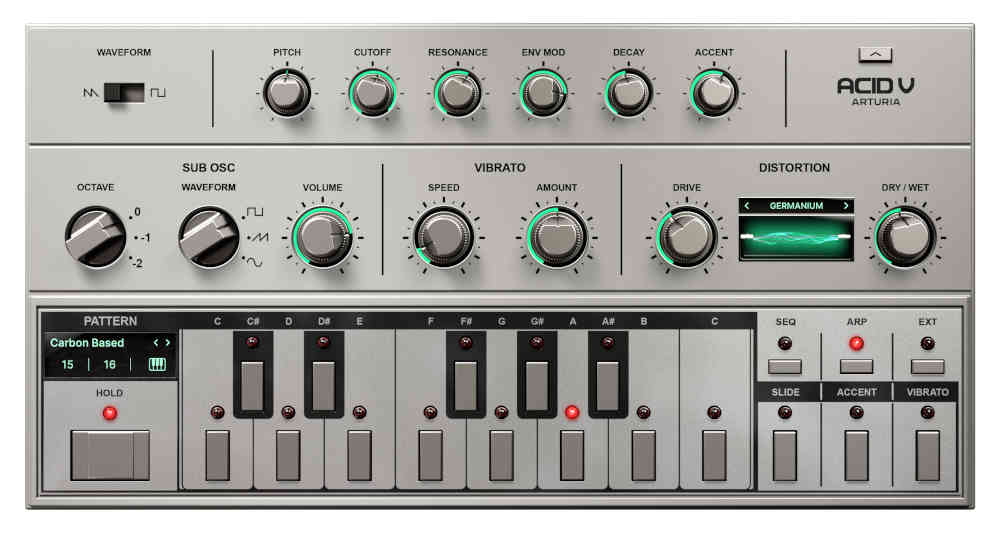
More Information
Acid V is available now and new and existing Arturia customers can benefit from limited-time introductory discounts (€99 for new users, discounts for existing Arturia software owners) until September 14th. Just sign in to your Arturia account now to find out how much discount you get.
You are currently viewing a placeholder content from YouTube. To access the actual content, click the button below. Please note that doing so will share data with third-party providers.
You are currently viewing a placeholder content from YouTube. To access the actual content, click the button below. Please note that doing so will share data with third-party providers.
*Note: This article contains affiliate links that help us fund our site. Don’t worry: the price for you always stays the same! If you buy something through these links, we will receive a small commission. Thank you for your support!
8 responses to “Arturia Acid V – A French Take on Squelchy Bass Lines”
 4,1 / 5,0 |
4,1 / 5,0 | 
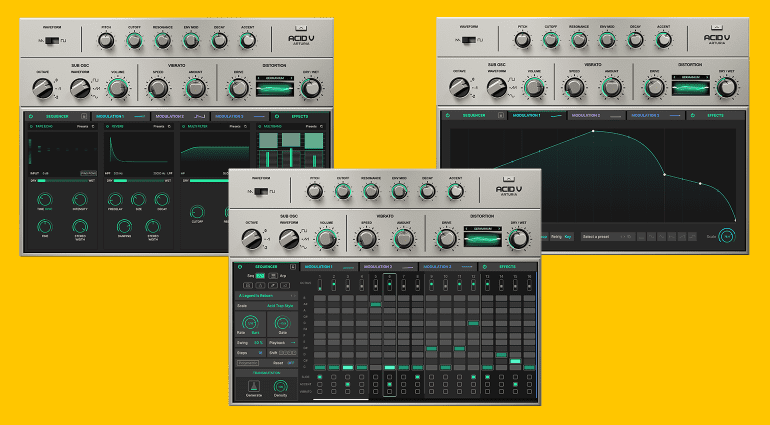
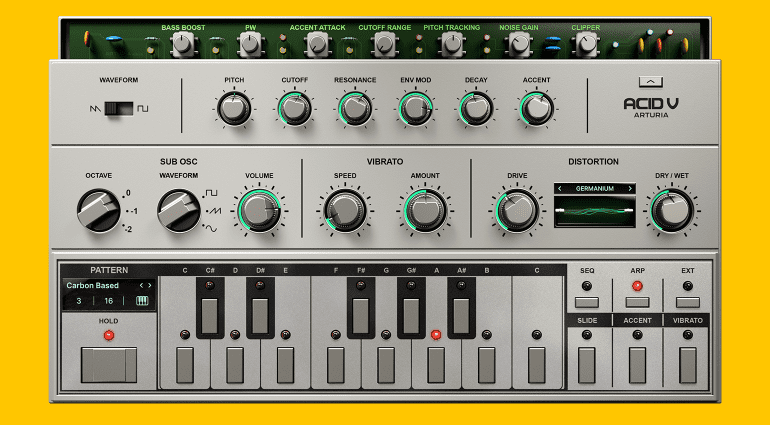



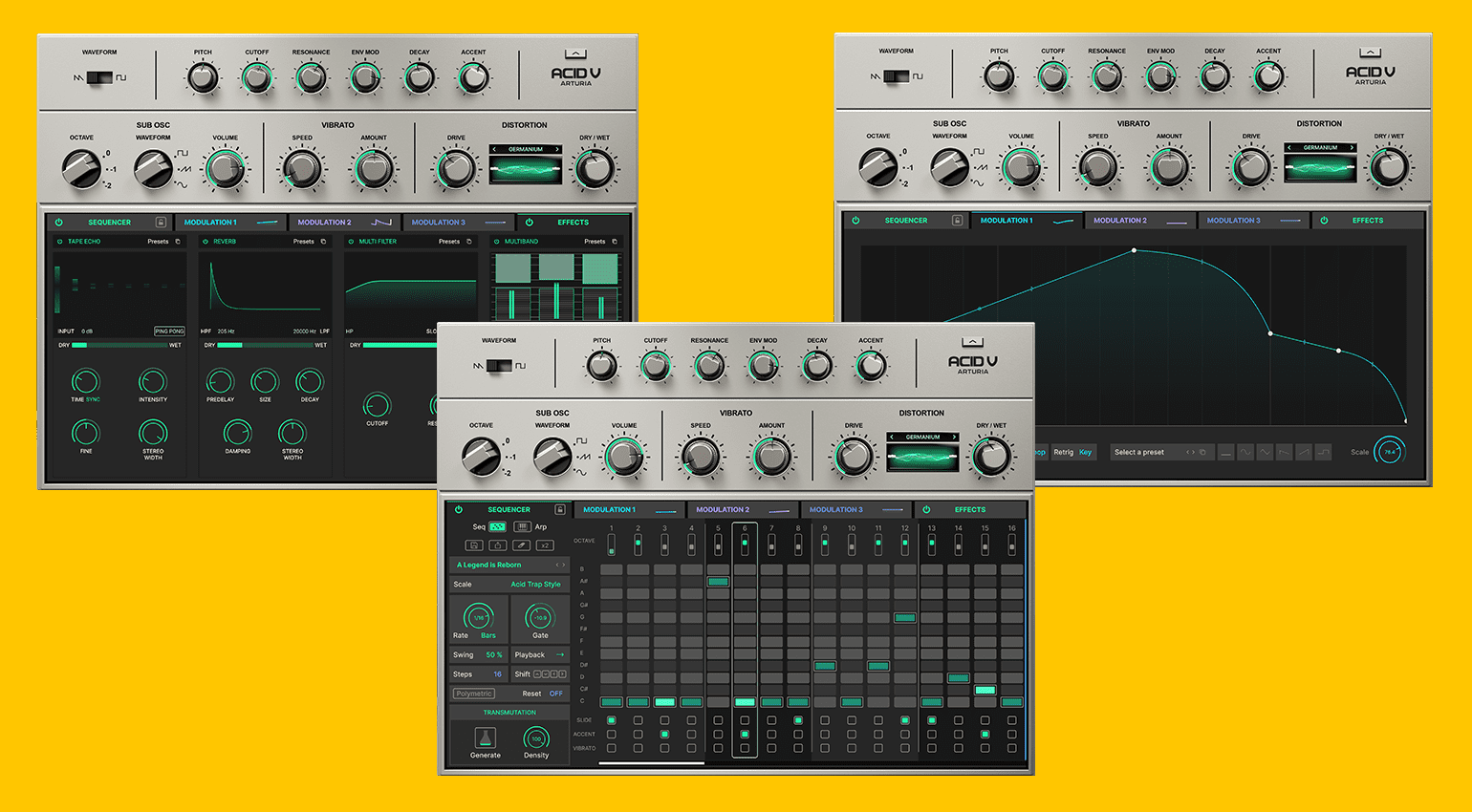
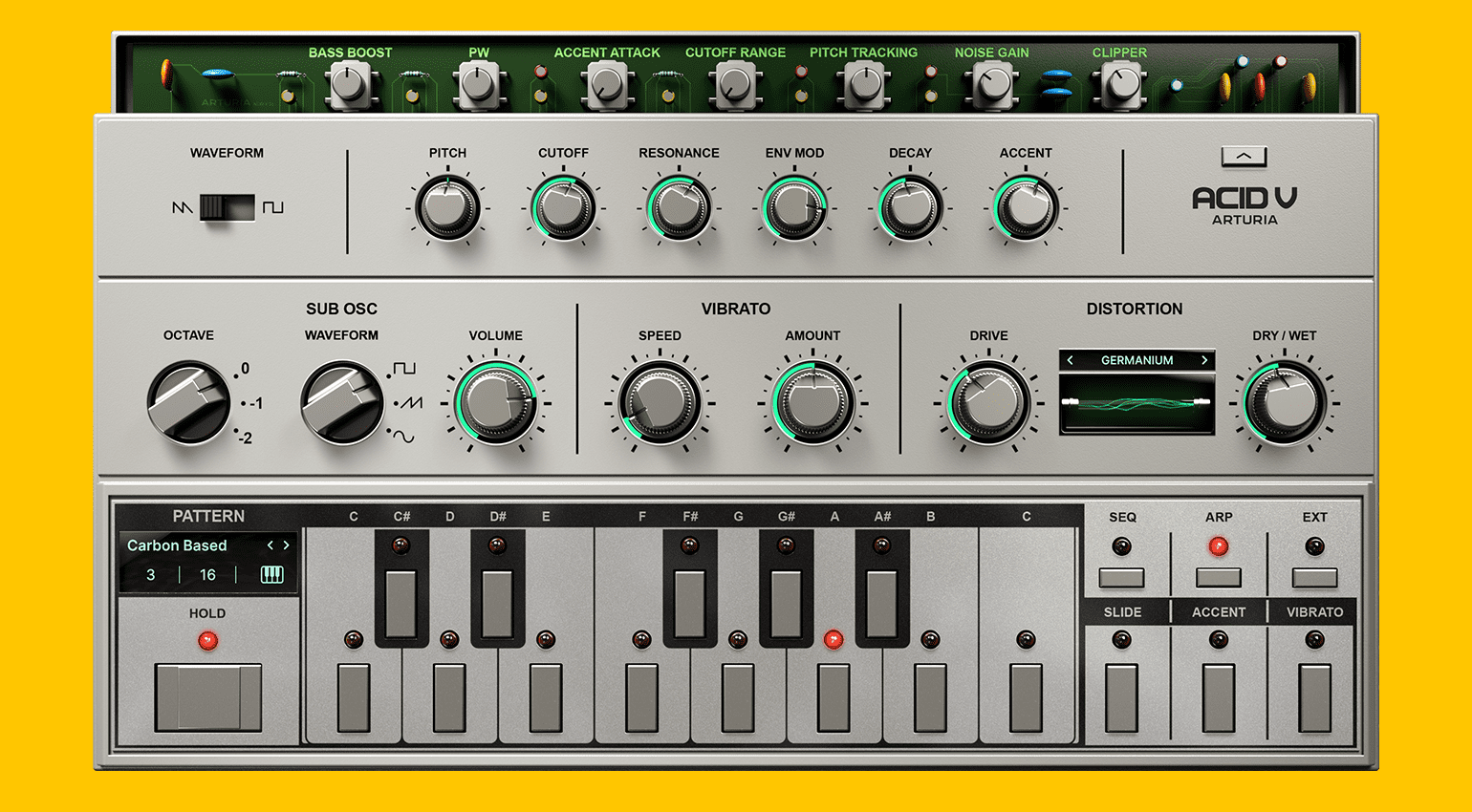

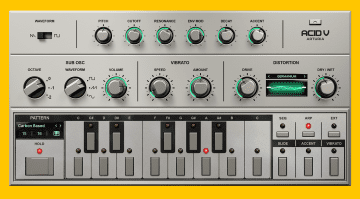

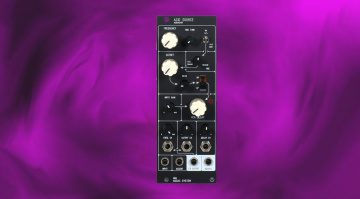
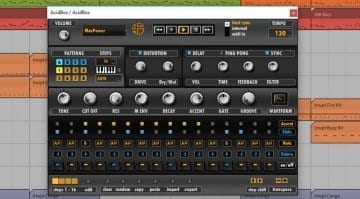

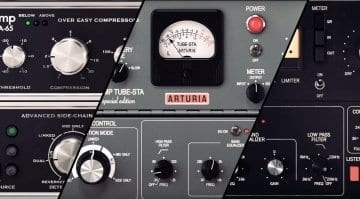
Soooo…. it’s a plug-in priced HIGHER than some hardware versions?! Not a lot of times where I’d say it’s cheaper to buy the behringer clone than a plug-in. This thing isn’t worth more than $50.
But a doubleclick gives you another one, hard to do that with hardware! 😉
Not with the LSD we’re taking, it’s fairly simple.
I bought the D16 Phoscyon 2 a few weeks ago. (I’ve tested the Roland Cloud version before, but I didn’t like it that much…) Yesterday I compared it with Arturia’s Acid (demo). D16 is much more attractive to me! What is a new function in Arturia, which is not included in the original 303, is already included in the D16! I feel like Arturia copied the Phoscyon 2 and not the original 303. Regardless, I will definitely buy it later, as I have other Arturia software, but it won’t beat Phoscyon 2. 50 euros as a returning customer.
What’s odd is that the really early versions of Phosocyon looked like a photo-realistic 303, but I understand they had to tone it down for legal reasons. Yet here’s Arturia getting away with it. So far.
Guessing this is for people starting out, just grabbing the whole V 10 Collection and getting all you need, since as mentioned D16 already got you covered. But I do think the Acid V looks better though.
Still running Rubber Duck and Rebirth, mind you I have been on one very long trip since 1996. What’s a ‘smartphone’, anyone know?
Anything that makes Acid House sounds has got be worth 100 or so federation credits. Unless you want to be a moneygrabbing square, whose feet have never been in orbit, and whose bank overdraft has never been your creditors’ main worry, more than it being your own. Another 100 or so? Whatever! Gimme ’em all and let Mr HSBC worry about it 😎
You are currently viewing a placeholder content from Facebook. To access the actual content, click the button below. Please note that doing so will share data with third-party providers.
More InformationYou are currently viewing a placeholder content from Instagram. To access the actual content, click the button below. Please note that doing so will share data with third-party providers.
More InformationYou are currently viewing a placeholder content from X. To access the actual content, click the button below. Please note that doing so will share data with third-party providers.
More Information